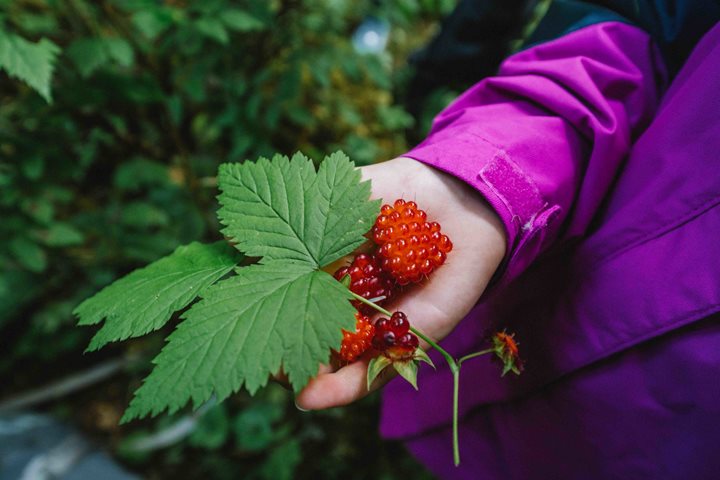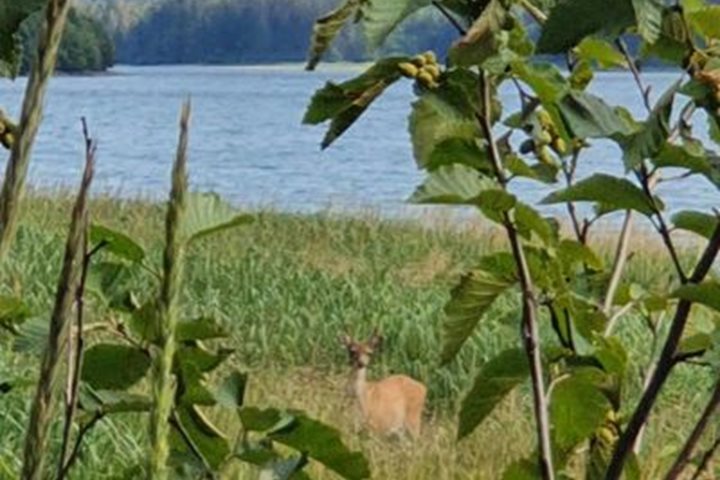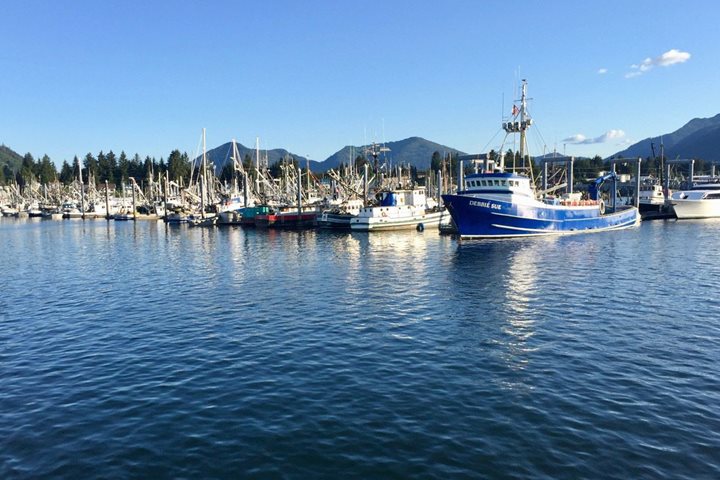Early this morning National Geographic Sea Bird made her way into Idaho Inlet searching for smallish marine mammals. Floating on the water watching the world open up to the morning, several Sea otters were spotted. Life passing them as we were, in a grey on grey day with shades of dark green. After a pre-breakfast cruise the National Geographic Sea Bird positioned to our morning anchorage in the Hobbit Hole. From this spot Zodiacs were launched in preparation for cruises through the Inian Passage. This island dotted passage located in Cross Sound at the most western area of our cruise in Alaska is home to tidal waters as deep as 20+ feet. Sea water rushes in and out of this narrow and constricted passage, filling the northern end of Southeast Alaska. In this rush of tidal water upwelling brings enormous amounts of food to all predators, who are, of course, waiting. Productivity is very high due to the sunlight hours and constant upwelling caused by tide changes. Bald eagles, Steller sea lions, Sea otters, Humpback whales and many other sea birds all come to these nutrient rich waters to feast.
Zodiacs left the fantail of the National Geographic Sea Bird and made their way out into a soft rain searching for whom ever might be on the hunt. Bald eagles soared from Sitka spruce trees. Sea otters went in and out of kelp beds in a constant state of grooming. Stellar sea lions did some cruising, but were mostly lounging on small haul-outs. The clouds lifted, dropped and lifted again as the weather changed by the minute creating many different light/shadow and color combinations for all photographers. Two rounds of tours made the journey in and around the Inian Islands revisiting a mother and baby Sea otter and another very relaxed old-man Sea otter, whose greatest desire was to remain groomed and groomed again and groomed again! All too soon it was time to return to the National Geographic Sea Bird and another wonderfully prepared meal. During lunch our expedition leader revisited our afternoon plans. In the meantime the National Geographic Sea Bird was positioning to Port Althrop, a small but lovely bay on the northwest corner of Chichagof Island one of the largest islands in the Alexander Archipelago.
Once everyone was ashore we divided into several groups and made our way across the extreme low tidal mud flats. Brown bear paw prints were found in the mud along with several birds, deer, and smaller animals all using a ready-made highway to cross quickly from one end of the bay to the other. Several groups made their way deep into the forest of Sitka spruce and Western hemlock. Other groups walked the edge of the forest finding many late spring wild flowers. Another group made a photo walk focusing on a world closer to each photographer...taking the time to wander, cameras in hand capturing images of this softly lit world of the fringe of the forest, mud flats, and the sea edge.
Rain continued to come and go. A soft, short squall of rain would pass from the mountains over Port Althrop, touch the water, pass over all the hikers, and then move from west to east leaving a sunbreak and endless interesting light and shadow for each of us to enjoy and paint with our cameras. The northwest coast presented yet another gift of a well-protected bay where all that was required was lifting one’s eyes to see and enjoy.









